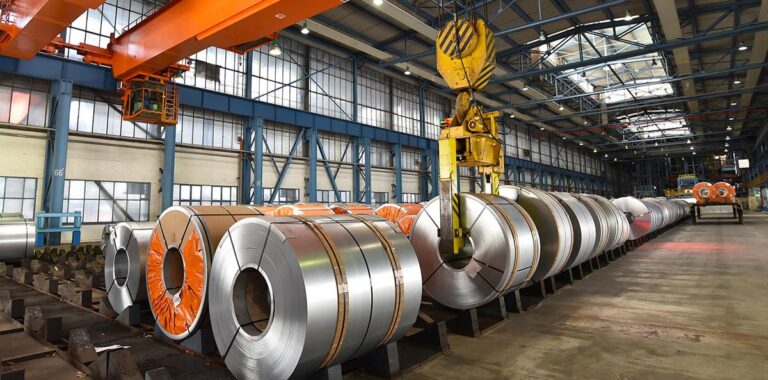The Canadian steel industry has issued a stark warning over potential “unrecoverable consequences” following the United States’ decision to impose double tariffs on imported steel. Industry leaders caution that these heightened trade barriers could severely destabilize the sector, jeopardizing jobs and cross-border economic ties. As tensions escalate between the neighboring countries, stakeholders are calling for urgent measures to prevent further damage to an already fragile steel market. The developments have sparked concern in Windsor, a key hub for CanadaŌĆÖs steel production, highlighting the broader implications for North American trade and industry.
Canadian steel industry voices alarm over US double-tariff threat
Industry leaders and economic experts in Canada have raised serious concerns following the announcement of potential double tariffs imposed by the United States on Canadian steel imports. The Canadian Steel Producers Association (CSPA) warns that these measures could lead to severe disruptions in cross-border trade and threaten thousands of jobs in the sector. The added financial burden is expected to impact not only producers but also supply chains and downstream industries dependent on Canadian steel.
The ramifications extend beyond the immediate economic impact, with analysts emphasizing the risk of long-term damage to the bilateral trade relationship. Key issues highlighted include:
- Increased production costs translating to higher prices for consumers and manufacturers.
- Potential retaliatory measures escalating trade tensions.
- Loss of competitiveness for Canadian steel in the global market.
| Impact Area | Potential Consequence |
|---|---|
| Employment | Thousands of jobs at risk |
| Production | Decrease in output by up to 20% |
| Trade Balance | Significant negative shift expected |
Economic repercussions for cross-border trade and industry stability
The imposition of a double tariff by the U.S. government threatens to disrupt the delicate balance of cross-border trade that underpins the Canadian steel industry. Industry leaders warn that these protectionist measures could trigger severe supply chain interruptions, resulting in increased costs for manufacturers on both sides of the border. The Canadian steel sector, already grappling with global market volatility, faces heightened uncertainty that could lead to reduced exports and loss of key American customers.
Such economic friction is expected to ripple through related industries, potentially destabilizing employment and investment. Key concerns include:
- Increased production costs due to tariffs on imported raw materials
- Reduced competitiveness of Canadian steel in U.S. and global markets
- Potential layoffs in downstream manufacturing sectors dependent on affordable steel
| Impact Area | Potential Effect |
|---|---|
| Cross-border Supply Chains | Disruption leading to delays and higher costs |
| Trade Volume | Sharp decline in steel exports to the U.S. |
| Industry Employment | Risk of job losses in steel and manufacturing |
Calls for diplomatic engagement to prevent long-term damage
The steel industry in Canada has urgently appealed for renewed diplomatic efforts between Ottawa and Washington to circumvent an escalating trade crisis. Industry leaders emphasize that the imposition of double tariffs by the U.S. threatens to inflict irreversible harm on a sector that supports thousands of jobs and underpins regional economies on both sides of the border. They argue that a collaborative approach centered on dialogue and compromise is essential to preserve the longstanding trade partnership and avert future disruptions.
Key industry voices have outlined several areas where diplomatic engagement could mitigate damage, including:
- Establishing binding frameworks to prevent abrupt tariff hikes
- Implementing joint monitoring mechanisms to address market imbalances
- Enhancing communication channels for early conflict resolution
| Stakeholder | Recommended Action | Expected Outcome |
|---|---|---|
| Canadian Government | Engage in bilateral negotiations | Reduce tariff risks |
| U.S. Trade Officials | Reassess tariff policies | Stabilize cross-border trade |
| Industry Associations | Facilitate stakeholder forums | Promote transparency |
Recommendations for collaborative tariff policy and market safeguards
To mitigate the impact of the proposed U.S. double-tariff measures, Canadian steel stakeholders advocate for a harmonized tariff framework that aligns closely with international trade norms, aiming to prevent retaliatory spirals that could destabilize North American steel markets. Key elements of this approach include:
- Joint stakeholder consultations involving government agencies, industry players, and trade experts from both countries.
- Establishment of transparent monitoring systems for tariff enforcement and market conditions.
- Implementation of phased tariff adjustments to allow gradual market adaptation.
Additionally, the industry underscores the necessity of safeguarding mechanisms designed to protect vulnerable sectors from abrupt market shocks while preserving competitive fairness. Proposed strategies emphasize:
| Safeguard Type | Objective | Expected Outcome |
|---|---|---|
| Quota Systems | Limit import volumes temporarily | Prevent market flooding and price crashes |
| Anti-dumping Measures | Discourage unfair pricing practices | Ensure level playing field for domestic producers |
| Dispute Resolution Mechanisms | Resolve conflicts promptly and fairly | Maintain stable bilateral trade relations |
Key Takeaways
As tensions escalate over the proposed U.S. double-tariff impositions, the Canadian steel industryŌĆÖs stark warning highlights the precarious position facing North American trade relations. Industry leaders insist that such measures would not only inflict immediate economic harm but could also lead to long-term, unrecoverable damage to CanadaŌĆÖs steel sector. With potential ripple effects extending beyond borders and into jobs and communities, all eyes remain on policymakers to navigate a resolution that safeguards the future of the industry and maintains the stability of the bilateral trade partnership.




